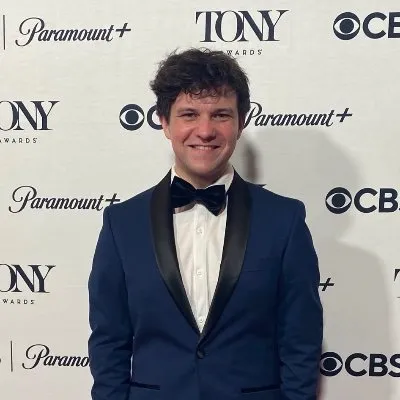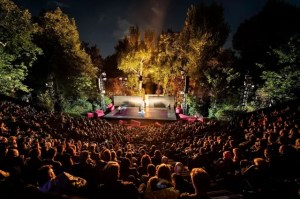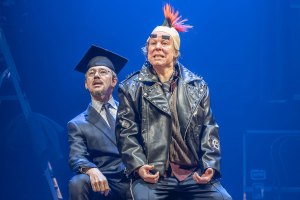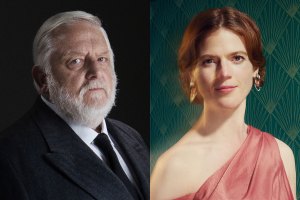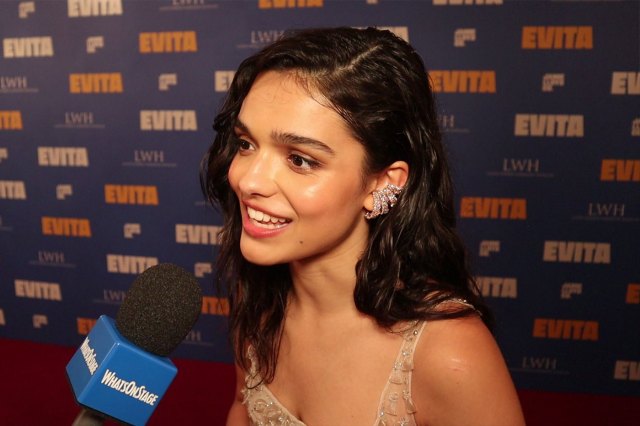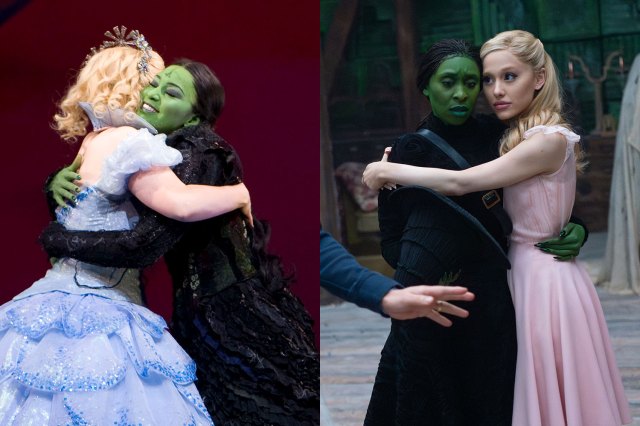
As we have already covered in great detail, the Wicked movie is made by people who adore the original stage musical, for people who adore both the stage musical and the original Wizard of Oz film.
While incredibly faithful to its source material, Jon M Chu’s film makes some sizeable alterations, expansions really, in order to flesh out characters and dive deeper into the world of Oz. Obviously we’ve not gone into every individual line change and musical alteration, but pulled out some interesting changes going on across the 150-minute runtime.
No One Mourns the Wicked
⁃ As was the case in Chu’s In the Heights, devotees of the cast recording will notice very early on that the music production (Stephen Oremus) feels different here – a larger orchestra allows composers Stephen Schwartz and John Powell to emphasise more percussion. It gives numbers like “No One Mourns the Wicked” more oomph.
⁃ Like the stage musical, the number does a lot of time hopping – from the Wicked Witch’s demise, to Munchkinland and back to Elphaba’s birth. One big change here is an expansion of the Thrupp flashback: not only do we see Elphaba being taken care of by her nanny, the ursine Dulcibear. This shows how her love for animals has existed her entire life. We also see Elphaba being taunted by Munchkin bullies about her skin colour (which makes the “Wizard and I” line about “small-minded” Munchkins feel a bit less overtly mean).
Dear Old Shiz
⁃ On stage, the arrivals at Shiz University normally happen during the performance of Dear Old Shiz, in order to allow time for Glinda to have a big costume change after her bubble ride. Here, however, Glinda (Ariana Grande) has already sailed into the university (making the most of those film sets!) before the number starts, and it now acts as an underscore for Elphaba (Cynthia Erivo) and Nessarose’s (Marissa Bode) arrival.
– Glinda also has two close friends – Bowen Yang’s Pfannee and Bronwyn James’ ShenShen – both with expanded roles here. Another brand new character is Miss Cottle, played by Keala Settle.
⁃ Speaking of Elphaba’s arrival – one of the most extreme changes here is that Elphaba isn’t initially enrolled at Shiz University; unlike the musical. Goaded by her father to look after Nessarose on her first day, it is only when Madame Morrible sees Elphaba’s untrained talents in action that she enrols her in Shiz. This then leads into the confusion over rooming, with Glinda accidentally offering to let Elphaba share with her in order to try and win favour with Morrible. Slightly more confusifying but it does provide some excellent moments for comedy and character.
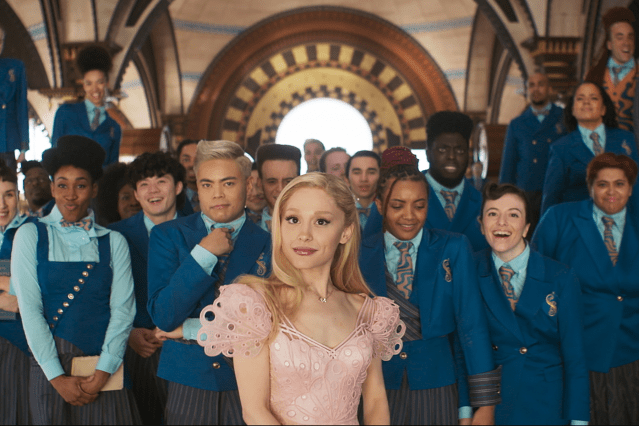
Something Different Happening in Oz
⁃ Chu and screenwriters Winnie Holzman (who wrote the musical’s book) and Dana Fox use the added runtime to expand on Elphaba and Glinda’s time at Shiz. While “The Wizard and I” and “What Is This Feeling?” aren’t massively changed (some added dialogue to the latter is pretty top-notch for showing off Grande’s comedy chops), there are a few new scenes that are added to bulk out these early experiences for the cast.
– First of all, “Something Bad” no longer happens in Dr Dillamond’s classroom, but later in the evening after he heads home and hosts a secret meeting with other concerned animals. Elphaba, eavesdropping, also has a vision of something terrible coming down the line, increasing a sense of foreboding.
– Another new scene sees Morrible and Elphaba working on her magic – which highlights how much it is her rage and sense of injustice that triggers her powers.
⁃ On her way back from Dillamond’s Elphaba has a pass-agg run-in with the newly arrived Fiyero (Jonathan Bailey) – a fantastic intervention that sets up a relationship between the pair before Fiyero enrolls at Shiz and starts a relationship with Glinda.
Dancing Through Story Beats
⁃ One thing that always bugged me in the stage show is Fiyero having to ask where to go for a dance. A true party prince will always know the best watering holes, as is the case in the film – the Ozdust Ballroom is Fiyero’s suggestion, rather than Glinda’s.
⁃ Glinda and Elphaba make friends at the Ozdust Ballroom in an expanded musical sequence. Another fantastic musical intervention is that the composers blend the “Dancing Through Life” tune with the opening notes of “For Good”, pre-empting that number but also making it a returning motif for the pair’s friendship.
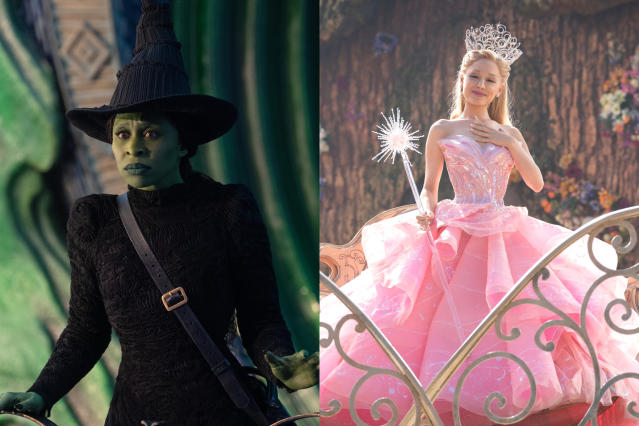
“Popular” and Poppies
⁃ Lots has been made of the extra few bars and key changes at the end of “Popular”.
⁃ Another big change and an excellent callback to the original film happens with Dr Dillamond’s arrest and the tiger cub’s presentation in a cage. Normally on stage, Elphaba gets angry and, in the commotion, bolts off stage with Fiyero and the cub. Here, she unleashes some sleep-inducing poppies and sends the classroom, the guards and professors to sleep (everyone except Fiyero basically). It’s a fantastic callback to the original Wizard of Oz film with the sleeping poppy field – and has some Easter eggs, as we explain here.
A short hop to the Emerald City
⁃ Elphaba is then summoned by the Wizard via Madame Morrible, and sets off from the train platform with her seemingly apathetic father there to say goodbye – a change from the stage show. Not that the governor even has a moment to talk to his daughter, but has a run-in with his youngest daughter’s new boyf Boq.
⁃ Glinda’s decision to join Elphaba on the train to the Emerald City is slightly more sudden and dramatic, but also introduces some more Grande comedy.
⁃ In Oz itself, there’s some changes to the number “One Short Day” (the number is reorchestrated and begins during the train journey).
⁃ The expanded Wizomania sequence is, as we’ve covered, laden with easter eggs, but also fleshes out a lot more backstory for Oz and the Grimmerie book of spells, as well as the magical, all-powerful beings the Wise Ones. It adds even more depth and intrigue to the film.
⁃ Elphaba and Glinda’s meeting plays out very similarly with some additional dialogue and character beats to make the most of the ever-charismatic Jeff Goldblum.

Gravity defied
⁃ After Elphaba discovers the truth behind the Wizard’s powers, there’s an extended, CGI-heavy passage where she’s bolting through Oz and being chased by some aggressive flying monkeys. Then, she and Glinda hop up into the Wizard’s balloon and try and sail it off into the sunset (without success). It allows the first film to feel like a complete narrative with a big climax, rather than the first half of a two-part show.
⁃ Holding space for the lyrics of “Defying Gravity” also means space to allow for a big ol’ vision where Elphaba sees her younger self as she learns to fly.
⁃ “Defying Gravity” has a few extra lyrics, an additional “Unlimited” and a repeat of Madame Morrible’s proclamation. It allows film viewers to soak up the consequences of Elphaba’s actions, the propaganda being unleashed on the Emerald City citizens and lets Erivo build to her humungous final notes.
⁃ During the finale, we get to see Elphaba’s dad keel over and die – setting up Nessarose’s circumstances for act two.
⁃ We also quickly flash over to Shiz to see Fiyero and Boq reacting to Elphaba’s rebellion – and show how panic is spreading throughout the land. A great bit of cliffhanger generation.

